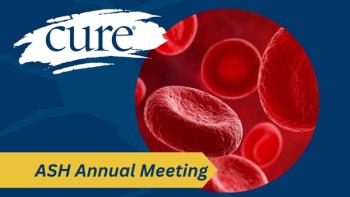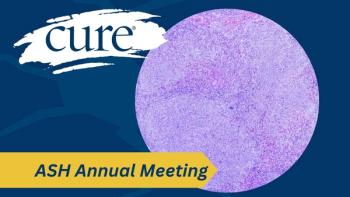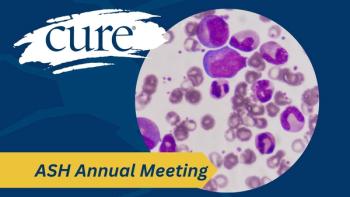
Blincyto Improves Survival for Ph- Relapsed Acute Lymphoblastic Leukemia
In a recent study, Blincyto (blinatumomab) had longer survival rates than standard chemotherapy for certain patients with ALL.
For patients with Philadelphia chromosome—negative (Ph-) relapsed or refractory B-cell precursor acute lymphoblastic leukemia (ALL), median overall survival (OS) when treated with Blincyto (blinatumomab) was 7.7 months, compared to only four months with standard chemotherapy, according to results of the phase 3 TOWER study published in The New England Journal of Medicine.
The Food and Drug Administration (FDA) granted an accelerated approval to the anti-CD19 immunotherapy Blincyto in December 2014 based on phase 2 data showing strong activity with the treatment in ALL. The accelerated approval was contingent on outcomes from the confirmatory TOWER trial.
"Historically, patients with relapsed or refractory ALL have a poor prognosis, with an overall survival of just four months on standard of care chemotherapy," study author Max S. Topp, M.D., professor and head of Hematology, University Hospital of Wuerzburg, Germany, said in a statement. "Findings from this head-to-head study showed that Blincyto almost doubled the median overall survival from four to 7.7 months, offering these high-risk patients a much needed alternative to chemotherapy that is both innovative and effective."
The open-label phase 3 TOWER trial randomized 405 patients in a 2-1 ratio to Blincyto (271 patients) or investigator’s choice of one of four standard chemotherapy regimens (134 patients). The median patient age was 37 years in both arms. Other baseline characteristics were also well balanced in the Blincyto versus the standard chemotherapy arm, including median bone marrow blasts (80 percent vs 79 percent), prior salvage therapy (56 percent vs 52 percent) and prior allogeneic stem cell transplant (alloSCT; 35 percent vs 34 percent).
Blincyto was administered in six-week cycles of four weeks on (continuous infusion of 9 µg/d in week one of cycle one, then 28 µg/d) and two weeks off. Patients received dexamethasone prior to Blincyto to prevent cytokine release syndrome. If remission was reached following two induction cycles, patients were allowed to receive treatment until relapse. OS was the primary efficacy endpoint. Complete remission (CR) and combined CR or CR with partial or incomplete hematologic recovery (CR/CRh/CRi) were secondary outcome measures.
Treatment with Blincyto reduced the risk of death by 29 percent versus standard chemotherapy. The OS benefit with Blincyto was observed across pre-specified patient subgroups based on age, prior salvage therapy, or alloSCT. The study was halted early for efficacy based on the recommendation of an independent data monitoring committee.
The CR rate with Blincyto was 34 percent versus 16 percent with standard chemotherapy. The combined CR/CRh/CRi rates were 44 percent versus 25 percent, respectively. Among the overall population of patients achieving a CR/CRh/CRi, minimal residual disease­—negative status was achieved by 76 percent of patients receiving Blincyto versus 48 percent of patients receiving standard of care. The six-month estimated event-free survival rates were 30.7 percent versus 12.5 percent, respectively.
"Adults with Ph- relapsed or refractory B-cell precursor ALL are in critical need of new treatment options," lead study author Hagop M. Kantarjian, M.D., professor and chair of the Department of Leukemia at The University of Texas MD Anderson Cancer Center, said in a statement. "Results from the TOWER study reinforce the potential of this single agent bispecific T cell engager immunotherapy, which helped a higher percentage of patients achieve minimal residual disease response versus standard of care chemotherapy, highlighting the depth and quality of remissions achieved."
The safety analysis for TOWER was based on 376 patients who received at least one dose of Blincyto (267 patients) or standard chemotherapy (109 patients). Of these patients, 57 percent and 25 percent, in the Blincyto and chemotherapy arms, respectively, started two or more cycles.
The adverse event (AE) profile was similar between the two arms and consistent with previous studies of Blincyto. The incidence of all-grade AEs was 99 percent in both treatment arms. Grade 3 AEs occurred in 37 percent of the Blincyto arm and 30 percent of the standard chemotherapy arm. The rates of grade 4 AEs were 31 percent and 44 percent, respectively. Grade 5/fatal AEs occurred in 19 percent of the Blincyto arm versus 17 percent of the chemotherapy arm, including grade 5 infection rates of 11 percent and 12 percent, respectively.
Grade 3 or higher AEs of interest included neutropenia (38 percent in the Blincyto arm vs 58 percent in the standard chemotherapy arm), infection (34 percent vs 52 percent), neurologic events (9 percent vs 8 percent) and cytokine release syndrome (5 percent vs 0).
"As the first study of an immunotherapy to demonstrate overall survival benefit in adult patients with Ph- relapsed or refractory B-cell precursor ALL, TOWER represents an important advance in the understanding of this aggressive, ultra-orphan disease," Sean E. Harper, M.D., executive vice president of Research and Development at Amgen, the developer of Blincyto, said in a statement. "As demonstrated by the data published in The New England Journal of Medicine, Blincyto has proven to improve overall survival, extend remission rates, and reduce minimal residual disease in these high-risk patients who previously have had limited effective options."





